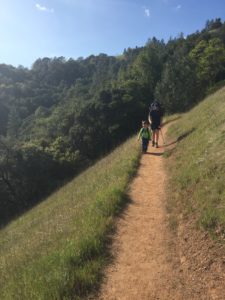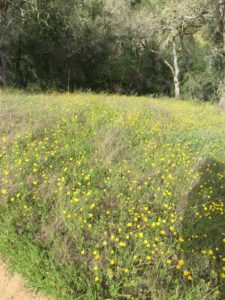My favorite rapper is Nas, so I was curious when royal.io announced two Nas song NFT drops. These NFTs will drop on Tuesday (Jan 24, 2022).
Royal.io is doing more interesting things with NFTs than your average monkey. The company is attaching NFTs to songs that give you not just bragging rights, but also a percentage of the streaming royalties for that song.
In this post, I cover:
- What is the Nas Rare NFT?
- What are the terms of the NFT royalty agreement?
- How do you get paid for your royalties?
- What’s the upside for royal.io and Nas?
- What is the estimated range of royalties value of Nas Rare NFT?
- What other value is there to the Nas Rare NFT?
- How does the Nas Rare NFT compare to the Ultra Black NFT?
- Am I buying?
What is the Nas Rare NFT?
I listen to Nas pretty much every day right now, since I love his Grammy-nominated King’s Disease 2 album (released in August 2021), and Nas overall shows up the most of any rapper on my Rap GOAT Spotify playlist. Rare, with nearly 11M plays on Spotify, is the most popular track on King’s Disease 2.
The Nas Rare NFT drop will give up to 1,110 people a legally binding percentage ownership in the royalties to this hit song, along with some other concrete and ephemeral benefits I’ll touch on below.
What are the terms of the NFT royalty agreement?
The terms of the NFT (see Legal link here), most importantly, give the buyer a percentage of the streaming royalties for the song. Depending on the level purchased from royal.io, a buyer can own 0.0133% (Gold), .0658% (Platinum), or 1.5789% (Diamond) of the streaming royalties.
This ownership, importantly, doesn’t include any other royalties or rights, such as the right to use the song’s name, Nas’s image, or stuff like mechanical royalties that might be earned from the song being sampled or monies earned from the song being sold in other ways like as individual recordings.
How do you get paid for your royalties?
Quoting the contract, “the Streaming Royalty Share will be paid or claimable in the form of USDC on Polygon.” USDC (USD Coin) is a stablecoin pegged to the US dollar, which means you should always be able to exchange a USD Coin for a dollar, assuming nothing disrupts the consortium that manages the value of the coin, nor the Ethereum cryptocurrency that Polygon/USDC runs on.
The contract also has provisions to let Nas/Royal update the terms, worded to say those changes should be beneficial to the owner of the NFTs… presumably to deal with needing to change using the various infrastructure as time wears on and startups and cryptocurrencies rise and fall.
What’s the upside for royal.io and Nas?
Assuming all tokens advertised are sold, royal.io will produce revenue of $369K for Rare, and $137K for Ultra Black.
Venture capitalists seem to find this model interesting, as the startup has raised $71M dollars, most recently $55M in November 22, from crypto-bull Andreesen Horowitz. Also notably, Nas himself invested in that funding round, so he has other interest in this NFT drop besides whatever (unknown to me) revenue split there is between royal.io and Nas.
What is the estimated range of royalties value of Nas Rare NFT?
Based on my back of the spreadsheet calculations, the value of the remaining streams for the song Rare are worth as much as $1.7M, and as little as $224K. For the high end estimate, the ROI for the NFT purchases is a win at about 4.5X, and for the low end it’s a loss at about .6X.
My model is based on analyzing how many plays Rare has had on Spotify to date, and extrapolating how many future plays it might have, plus extrapolating what the number and value of plays are on non-Spotify platforms (e.g. Apple, Amazon, etc).
A big assumption in my estimate is around what percent of plays the song has already experienced. If you assume Rare will eventually be as popular as Nas’s hit songs N.Y. State of Mind and If I Ruled the World (those songs have ~160M plays on Spotify vs Rare’s current 10M), then you get the high end. If you assume Rare will be as popular as a mediocre performer from Nas’s greatest hits (such as Got Ur Self a Gun, Made You Look, or I Can), then you get the low end with about 20M additional Spotify plays projected, for a total of 30M.
What other value is there to the Nas Rare NFT?
Besides the explicit value of the royalties (discounted by whatever you think the platform risk might be related to the crypto platforms and contractual legal stuff underlying the deal), you might also see value in the extras detailed in the drop page, including things like concert tickets and a video call with Nas’s acclaimed producer Hit-Boy.
In addition, there might be collectibility value to the token… whatever added premium that could be derived from fans wanting to own these tokens, or business interests wanting to consolidate ownership of Nas catalog rights. There is some precedent for the collectibility of music.
How does the Nas Rare NFT compare to the Ultra Black NFT?
I think the ROI per dollar spent could theoretically be very similar for the two NFTs, because while Ultra Black is a much less popular song, it’s also priced at close to 1/3rd of the Rare NFT. So if you do the same analysis on both, you find their range of returns to be similar.
On the other hand, I think the chance that Rare is one of Nas’s outlier songs with hundreds of millions of plays is much higher, so I think Rare is a better buy. It’s accrued more plays in a much shorter amount of time, plus I like the song more, and I think it has more pop appeal.
Am I buying?
Well, I’m going to give it a shot. I plan to attempt to buy a Rare NFT when it drops. And we’ll see if I am one of the first suckers to click through. Why:
- I love Nas yo!
- It might be a good investment if you buy my analysis
- It’d be neat to be part of history if this is actually going to be a thing
Thanks to @lacker for giving this a read before publication.






